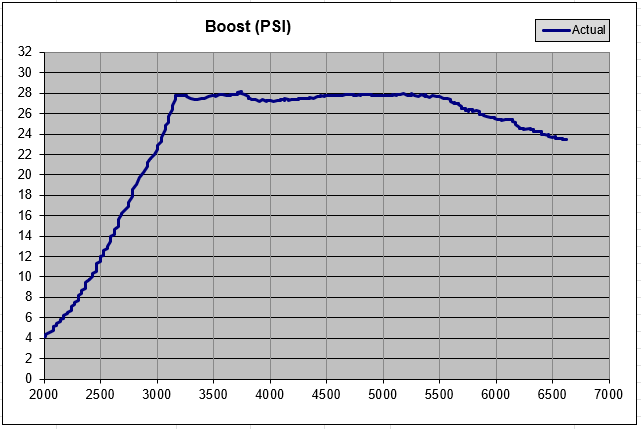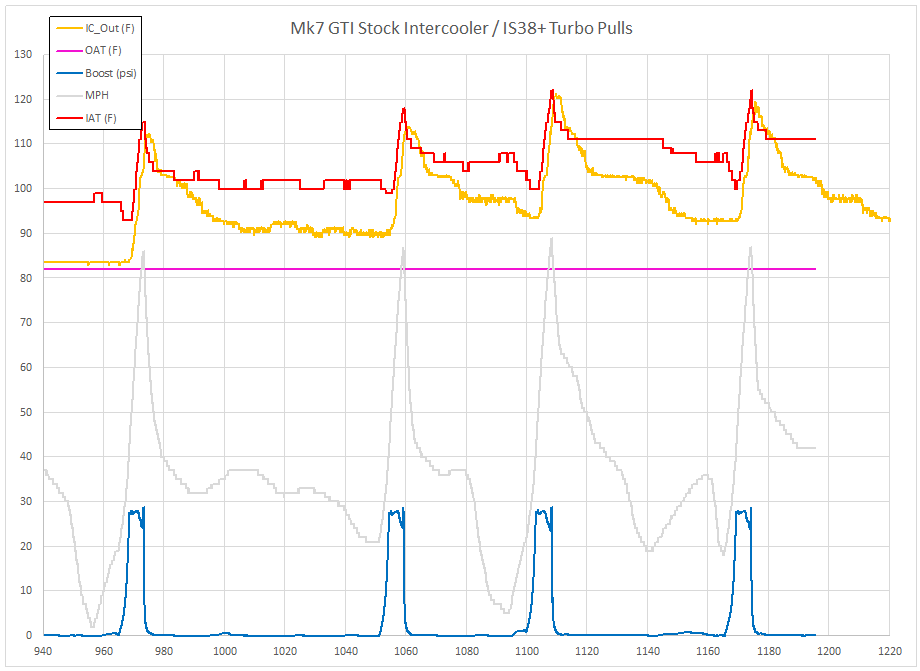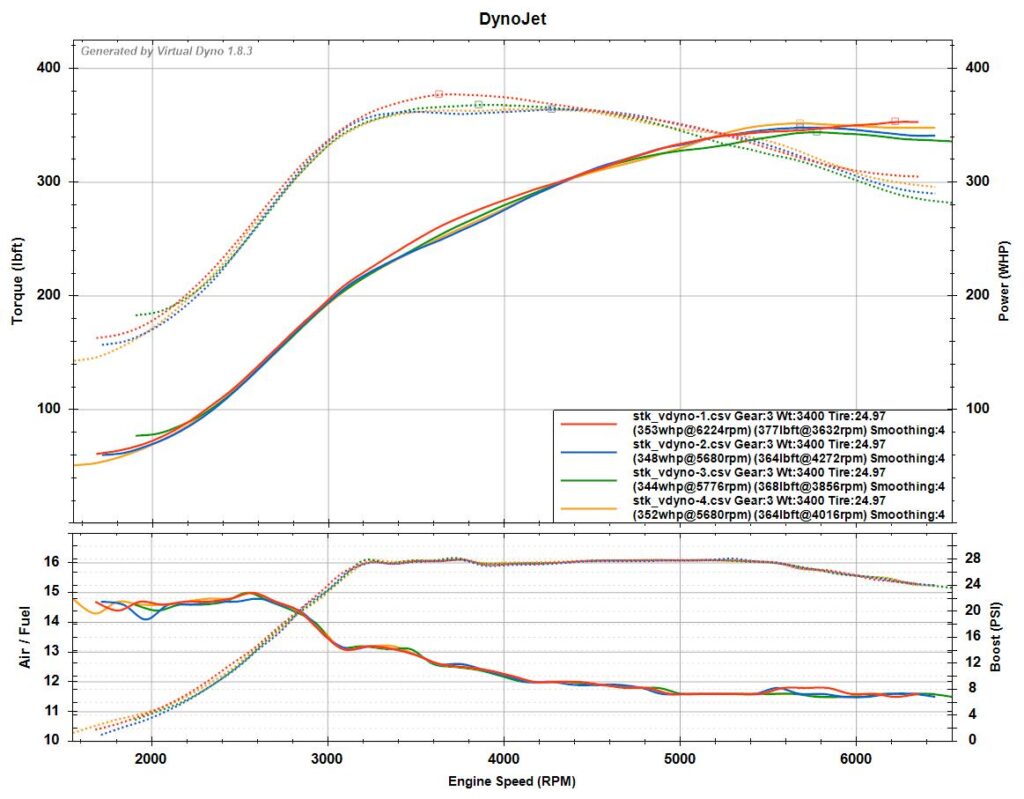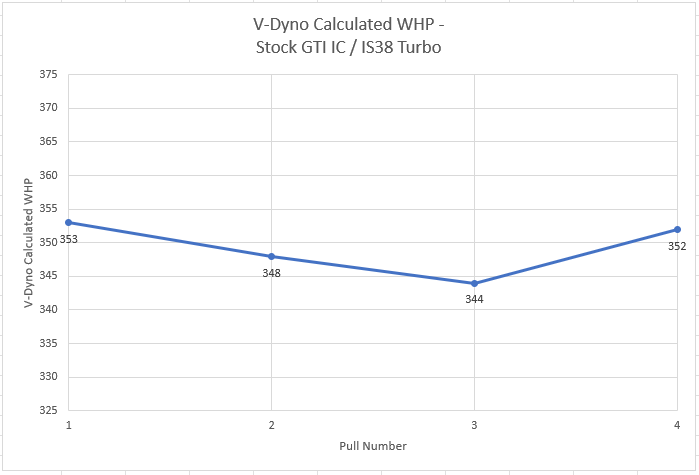Background:
The idea that the GTI’s stock intercooler is barely adequate for a single pull with a stock turbo and stock tune is occasionally communicated to people looking for advice on “what to upgrade first“.
The topic of this post is a review of data I have recorded to see if the concern that the stock IC is done after a single pull is justified.

In a previous post, the stock GTI IC was compared with an aftermarket intercooler. Some of the data used to compare the stock IC with the aftermarket IC was recorded on the street as a series of full throttle pulls. This is the data that will be evaluated.
Test Procedure:
Data was recorded using a GTI equipped with an IS38 turbocharger and a custom tune. The intercooler was subjected to full-throttle pulls in third gear that started around 2000 RPM and concluded between 6000-6500 RPM. The boost profile during these pulls is shown below:

Note: This level of boost is likely greater than a “tuned” GTI stock turbo (IHI IS20) would be operated at. Greater pressure produces higher air temperatures, so this example is likely a worse case than what an IS20-equipped GTI would subject the stock IC to. It is undoubtedly more pressure than what a stock-tuned IS20 would produce.
Data was recorded when the ambient temperature was 82 degrees Fahrenheit. It is anticipated that performance will be worse at higher ambient air temperatures and better at lower ambient temperatures.
Test Results:
Relevant data from the series of pulls is shown below:

What is most noteworthy about these results is the rate at which the air temperature exiting the intercooler drops at the conclusion of a pull, shown by the orange line.
The temperature out of the intercooler drops steadily when the vehicle speed remains above approximately 35 mph.
Following the second and third pulls, the vehicle speed drops to around 20 mph and the air temperature decrease pauses when the GTI slows this much.
The concern about the stock IC being good for a single pull should be considered against the time interval that will follow the first pull and the speed that the vehicle will maintain through the inter-pull time period.
The acceleration data recorded during these pulls were entered into the Virtual Dyno application to estimate the wheel horsepower. The four pulls are shown on the chart:

Plotting the wheel horsepower estimates sequentially is shown next:

Next, the power estimates are plotted as a function of the time interval between the pulls:

Wheel horsepower does drop off some with subsequent pulls, but it is worth remembering that the speed during the recovery time period for two periods was down to 20 mph.
Some cautions I have read about using the stock IC give the impression that power drops off precipitously. At least during this test that was not the case.
Conclusions:
The stock GTI intercooler was subjected to abnormally high boost pressure to evaluate the effect on engine power output across a series of full-throttle pulls.
Some power loss occurred according to calculations using Virtual Dyno.
Post-pull recovery time and vehicle speed during recovery may be significant factors affecting subsequent pull power production.
Describing the stock GTI as being good for a single pull is not a sufficient description of how the product performs. The amount of time the intercooler has to cool, as well as the speed the vehicle travels at, will affect the ability of the intercooler to support a subsequent pull.
How the vehicle is to be operated must be known in order to estimate how adequate the stock IC may be.
